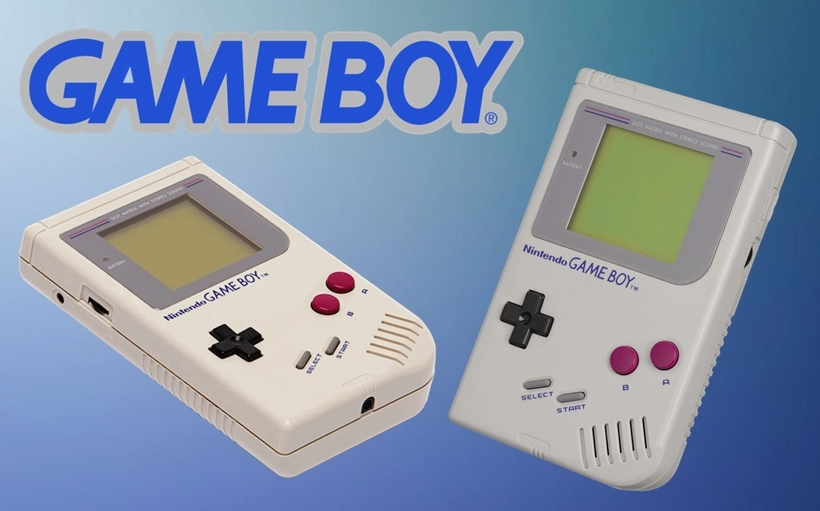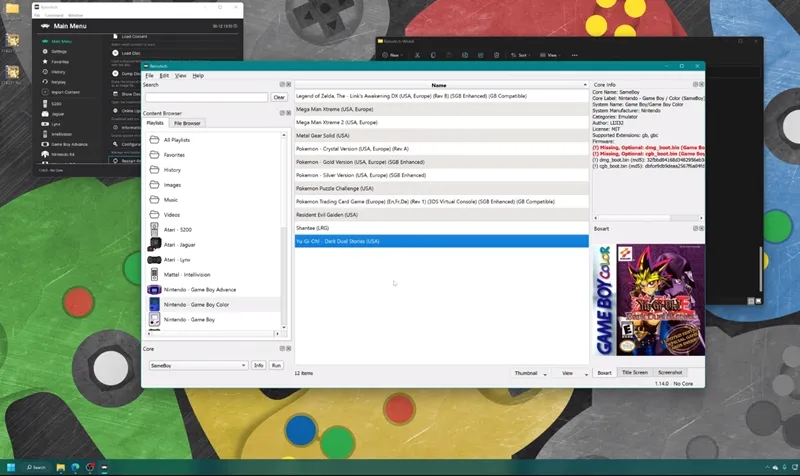Guide Install and Using Emulator Nintendo Game Boy on PC Laptop
The Nintendo Game Boy holds a special place in the hearts of gamers around the world. Released in 1989, this iconic handheld console revolutionized portable gaming and introduced us to unforgettable characters and captivating gameplay. While the original Game Boy has become a relic of the past, the magic of its games lives on through emulator Nintendo Game Boy. In this article, we embark on a nostalgic journey through time to explore the world of emulator Nintendo Game Boy and how it allows us to relive the golden age of handheld gaming. Emulator Nintendo Game Boy refers to the software that enables us to play Game Boy games on modern devices such as computers, smartphones, and tablets. With the advancement of technology and the growing popularity of retro gaming, emulators have become a gateway to the past, granting us access to an extensive library of classic games. Whether you’re a seasoned gamer longing to relive your childhood memories or a curious newcomer seeking to discover the gems of yesteryear, emulator Nintendo Game Boy offers an immersive experience that transcends time.

One of the remarkable features of emulator Nintendo Game Boy is the ability to play a vast array of beloved titles from the Game Boy library. From iconic franchises like Pokémon, Super Mario, and The Legend of Zelda to lesser-known gems waiting to be uncovered, the emulator opens up a world of gaming possibilities. Imagine embarking on a nostalgic quest with Link in search of the Triforce, or capturing and training Pokémon on your virtual journey to become a Pokémon Master. With emulator Nintendo Game Boy, these adventures and many more are just a few clicks away. Emulator Nintendo Game Boy not only allows us to play these cherished games but also enhances the experience with modern features. Emulators often offer options like save states, which enable players to save their progress at any moment and continue from that point later. Additionally, features like fast-forwarding and customizable controls add convenience and personalization to the gameplay. The emulator recreates the essence of the original Game Boy, complete with the distinctive pixelated graphics and nostalgic soundtracks, ensuring an authentic retro gaming experience.
About Emulator Nintendo Game Boy
Before you install the Emulator Nintendo Game Boy, you should first check the required specifications, because if it is not adequate, it can lag and even hang.
✽ Minimum Specifications Windows
Operating System: Windows Xp, Windows Vista, Windows 7, Windows 8.1, Windows 10, Windows 11
Processor: Intel Core 2 Duo 1.2 GHz or AMD Athlon 64 X2 2.0 GHz
CPU Type: 32bit (86bit) or 64bit
Memory RAM: 64 MB RAM
Graphics: NVIDIA GeForce or ATI Radeon X1300
Hard Drive: 10 MB available space
✽ Minimum Specifications Mac OS
Operating System: Apple MacOS, Mavericks, Yosemite, El Capitan, Sierra / High Sierra, Mojave, Catalina, Big Sur, Monterey
CPU Type : 32/64-bit(Intel Core Duo CPU, 2GHz or faster recommended)
Memory: 64 MB RAM
Disk Space : 5 MB Free Disk Space
✽ Minimum Specifications Linux
Operating System: Mint, Ubuntu, MX, Fedora, Debian, Elementary, Zorin, Kali, CentOS, Manjaro, Pop, Solus, Deepin
CPU Type : 32/64-bit(Intel Core Duo CPU, 2GHz or faster recommended)
Memory: 64 MB RAM
Disk Space : 10 MB
✽ Minimum Specifications Android/iOs
Memory RAM: 512 MB RAM
Memory ROM : 10 MB
You can use the Scan feature “Can you run it” to find out whether your device can or not install Nintendo N64. It’s quite light because with 512 MB of RAM, you can run the emulator and play N64 games.
Tutorial Install Emulator
To use the Nestopia UE emulator and play Nintendo Game Boy games on your computer, follow these steps:
- Download Nestopia UE: Visit a reliable source or the official Nestopia UE website to download the emulator. Ensure that you download the version compatible with your operating system (Windows, macOS, or Linux).
- Obtain Game Boy ROMs: Find Game Boy game ROMs from legitimate sources. Remember that downloading ROMs for games you don’t own is generally considered piracy and is illegal in many jurisdictions. Only use ROMs for games that you have legal access to.
- Launch Nestopia UE: Once you have downloaded and installed Nestopia UE, launch the emulator on your computer.
- Configure Input and Controls: When you open Nestopia UE, you’ll need to configure the input settings. Click on “Input” in the top menu bar and choose “Input Configuration” from the dropdown menu. Here, you can set up your keyboard or gamepad controls by selecting the corresponding options.
- Load a Game Boy ROM: To load a Game Boy game, click on “File” in the menu bar and choose “Open ROM” or use the keyboard shortcut Ctrl+O. Locate the Game Boy ROM file you want to play and select it. Nestopia UE supports various ROM file formats such as .nes.
- Adjust Settings (Optional): Nestopia UE allows you to customize various settings to enhance your gaming experience. Click on “Options” in the menu bar and explore options like video settings, audio settings, and input configuration to suit your preferences. You can also configure save state slots, controller settings, and other advanced options.
- Play the Game: Once you have loaded a ROM and made any desired adjustments, the game should start automatically. You can now enjoy playing Nintendo Game Boy games on the Nestopia UE emulator. Use your configured controls to navigate, play, and save your progress.
- Additional Features: Nestopia UE offers additional features such as save states, cheat code support, and video filters. You can access these features through the various menu options or keyboard shortcuts specified in the emulator’s documentation.

7 Best Nintendo Game Boy Emulators
The Game Boy, with its iconic green screen and library of unforgettable games, holds a special place in the hearts of gamers. While the original handheld console may be a relic of the past, you can still relive those nostalgic moments through Nintendo Game Boy emulators. Here are six of the best Nintendo Game Boy emulators to help you embark on a journey back to the golden age of handheld gaming:
- VisualBoy Advance: VisualBoy Advance is a popular choice among Game Boy enthusiasts. This emulator is available for Windows, macOS, and Linux, offering a user-friendly interface and a wide range of features. It supports not only Game Boy and Game Boy Color games but also Game Boy Advance titles, making it a versatile option for retro gaming.
- RetroArch: RetroArch is a multi-platform emulator that supports various consoles, including the Game Boy. This powerful emulator boasts an intuitive interface and customizable controls. RetroArch’s extensive library of shaders allows you to enhance the visual experience and recreate the look and feel of the original Game Boy.
- mGBA: mGBA is another reliable emulator that focuses on accuracy and performance. It supports Game Boy, Game Boy Color, and Game Boy Advance games and is available for Windows, macOS, Linux, and even some handheld devices. With mGBA, you can expect smooth gameplay and a wide range of features, such as save states and cheat code support.
- BGB: If you’re looking for a Windows-based emulator that is known for its accuracy, BGB is an excellent choice. BGB offers highly accurate emulation, making it suitable for those seeking an authentic experience. It also provides features like debugging tools, multiplayer support, and customizable color palettes.
- No$GBA: No$GBA, originally developed as a Nintendo DS emulator, also supports Game Boy Advance and Game Boy Color games. It offers features such as save states, multiplayer support, and the ability to fast-forward gameplay. No$GBA is available for Windows and provides a smooth and reliable emulation experience.
- Gambatte: Gambatte is a lightweight emulator that focuses on accuracy and performance. It supports Game Boy and Game Boy Color games and is available for multiple platforms, including Windows, macOS, and Linux. Gambatte is known for its compatibility with a wide range of games and offers features like save states and customizable controls.
Each of these emulators has its own strengths and features, so it’s worth exploring them to find the one that suits your preferences and gaming needs. With these emulators at your disposal, you can relive the magic of classic Game Boy games and experience the joy of handheld gaming once again.
Nintendo Game Boy File Formats
Nintendo Game Boy games typically come in several file formats, each serving a specific purpose. Here are the common file formats associated with Nintendo Game Boy:
- ROM (Read-Only Memory): The ROM file format (.gb or .gbc) represents the game cartridge’s data, including the game code, graphics, sound, and other game assets. These files contain a copy of the original game data and can be used with Game Boy emulators or flash cartridges to play the games on various devices.
- SAV (Save): The SAV file format (.sav) stores the save data for Game Boy games. It contains information such as the player’s progress, high scores, items collected, and game settings. SAV files are created and used by emulators and flash cartridges to save and load game progress.
- SRM (Save RAM): SRM files (.srm) are similar to SAV files and also store save data for Game Boy games. However, SRM files are specific to certain emulators like BGB and Gambatte and may not be compatible with all emulators. They serve the same purpose as SAV files in preserving game progress.
- IPS (International Patching System): IPS files (.ips) are not specific to Game Boy games but are commonly used to apply patches or modifications to ROM files. These patches can alter game content, fix bugs, or provide translation patches to make games playable in different languages. IPS files are applied using patching tools compatible with Game Boy emulators.
- GB/GBC (Game Boy/Game Boy Color) File Archive: GB or GBC file archives (.zip or .rar) are compressed files that contain one or multiple ROM or SAV files. These archives allow for easier storage and distribution of multiple Game Boy games in a single file. Emulators can often directly load and play games from these archives without the need to extract individual files.
Understanding these file formats will help you manage and enjoy your Nintendo Game Boy games on emulators or other platforms.

